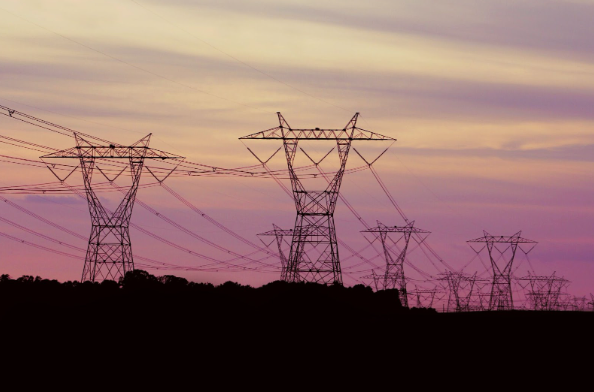Power, or wattage, is a fundamental aspect of how electrical devices and appliances function. It refers to the amount of electricity a device can generate or consume. There are two main types of electrical power: AC (Alternating Current) and DC (Direct Current). Both play essential roles in powering our daily lives, but they differ significantly in their characteristics and applications. This article will provide a detailed comparison between ac vs dc power, helping you understand their differences and how they are used in various devices and systems. We will also explore how specific technologies, such as the Renogy 3000w inverter, are designed to handle these power types effectively.
What is AC Power?
Alternating Current (AC) is the most common form of electricity used in households and businesses worldwide. It is called alternating because the direction of current flow reverses periodically. AC power is typically generated by power plants, which send electricity through transmission lines to reach homes and other buildings. This ability to switch directions makes it easier to transport over long distances without losing much energy. AC power is ideal for powering large appliances, such as refrigerators, air conditioners, and lighting systems.
What is DC Power?
Direct Current (DC), on the other hand, flows in one constant direction. DC power is often found in smaller electronic devices like laptops, smartphones, and flashlights. It is produced by sources such as batteries, solar panels, and fuel cells. Since DC power flows in one direction, it is better suited for devices that require a steady, constant flow of electricity. Electronics like LED lights, TVs, and computers use DC power internally, even if they are plugged into an AC outlet.
The Key Differences Between AC and DC Power
- Direction of Flow:
- AC Power: Alternates direction (back and forth), making it efficient for long-distance transmission.
- DC Power: Flows in one direction, providing a steady and consistent power supply.
- Applications:
- AC Power: Powers most household appliances and industrial machines.
- DC Power: Powers small electronics, including gadgets like laptops, smartphones, and flashlights.
- Efficiency in Transmission:
- AC Power: More efficient for long-distance transmission because the voltage can be easily stepped up or down using transformers.
- DC Power: Less efficient for long-distance transmission but excels in applications requiring consistent power.
- Safety:
- AC Power: Can be dangerous at high voltages, but it is typically safer when used in standard residential and commercial settings due to its ease of transformation.
- DC Power: More stable and safe at lower voltages, making it ideal for battery-powered devices.
Why AC Power is More Common in Households
The widespread use of AC power in homes and businesses is due to its ability to be easily transmitted over long distances. High-voltage AC is generated by power plants and sent through power lines, where it can be reduced to a safe level for use in homes. The ability to easily convert AC power to different voltages also makes it highly adaptable to different applications. Electrical appliances like refrigerators, washing machines, and electric ovens require high-powered AC to operate efficiently.
Why DC Power is Essential for Electronics
DC power is indispensable in modern electronics because many devices require a steady, unidirectional flow of electricity. For example, mobile phones, tablets, and laptops all rely on DC power. Since these devices operate on internal batteries, they need a constant voltage to function. The advent of solar energy also brought a greater reliance on DC power, as solar panels generate DC electricity, which can be stored in batteries for later use.
Inverters: Bridging the Gap Between AC and DC
Inverters play a crucial role in converting DC power into AC power and vice versa. For instance, the Renogy 3000W inverter is a versatile device that converts DC power (from a solar panel or battery) into AC power, allowing you to power household appliances from a renewable energy source. This inverter is especially useful in off-grid solar setups, where electricity from a battery needs to be converted to a usable form for standard appliances.
Is AC or DC Power Better?
The question of whether AC or DC power is better depends on the application. For long-distance transmission and powering large appliances, AC power is the clear winner due to its efficiency in transmitting electricity. However, for portable devices, batteries, and electronics, DC power is superior because of its steady and consistent flow. Moreover, advancements in renewable energy systems, such as solar panels, are pushing DC power into new applications, particularly in off-grid and backup power solutions.
Why the Right Inverter Matters
If you plan to switch to a solar or backup power system, understanding the role of inverters is crucial. A Renogy 3000W inverter is an excellent choice for converting DC power into AC to run household appliances. With a capacity of 3000 watts, it can handle a variety of devices, ensuring that you get the most out of your solar power system or battery backup. When choosing an inverter, it’s essential to match it with your power needs, ensuring that it can handle the wattage required by your devices.
Conclusion
In summary, AC and DC power serve different yet complementary roles in the world of electricity. AC power is dominant in household and industrial applications, while DC power is essential for electronics, portable devices, and renewable energy systems. The Renogy 3000W inverter is a great example of how technology bridges the gap between these two types of power, enabling a more efficient and sustainable energy system. Understanding the differences between AC and DC power can help you make informed decisions about energy use and the devices you rely on daily.
